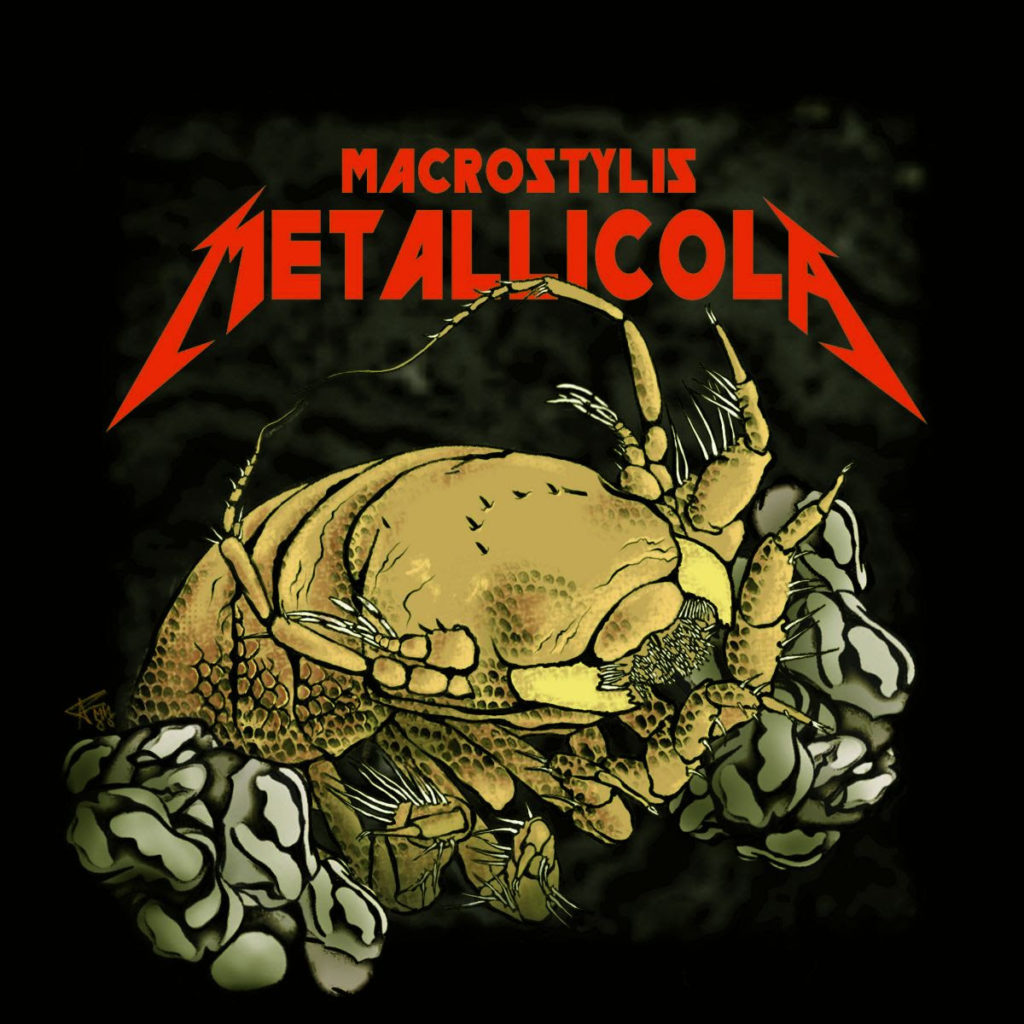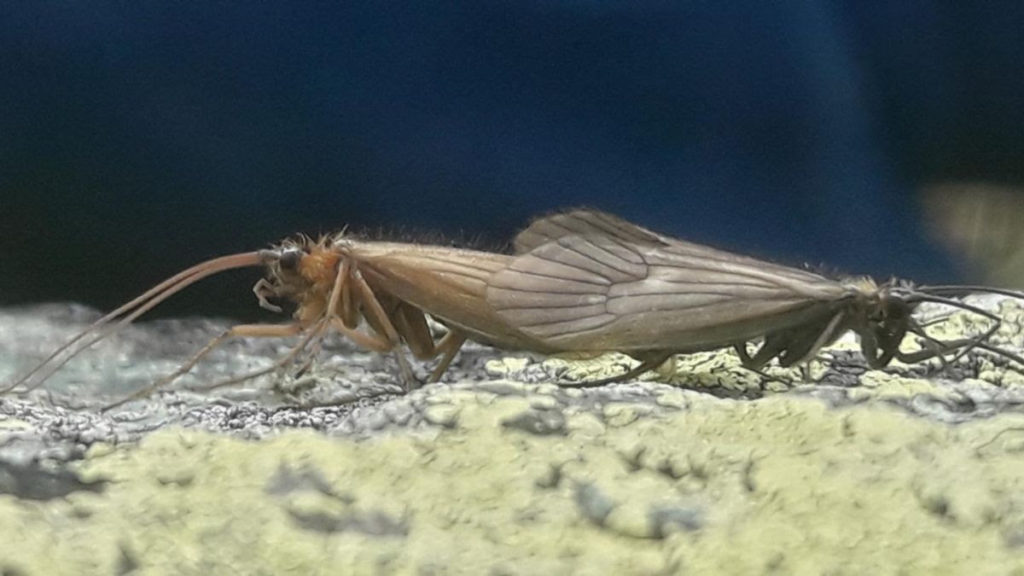Welcome Back to the Lab!
Call the paparazzi and break out your VIP pass, it’s time for Celebrity Bugs, Part 2: Musician Edition! (With a surprise guest appearance at the end!)
Kaikaia gaga

Image credit: L. Brian Stauffer
“If there is going to be a Lady Gaga bug, it’s going to be a treehopper, because they’ve got these crazy horns, they have this wacky fashion sense about them,” says Brendan Morris of the University of Illinois at Urbana-Champaign. Morris, a graduate student at UIUC, described the new specimen as a part of his ongoing research on treehoppers. While the specimen had been collected nearly 30 years prior, Morris hopes to travel to Nicaragua to find live specimens of the Lady Gaga treehopper.
Leucothoe eltoni

Dr. James Thomas of the Halmos College of Natural Sciences and Oceanography was the first to describe this tropical shrimp-like crustacean. “I named the species in honor of Sir Elton John because I have listened to his music in my lab during my entire scientific career[.] So, when this unusual crustacean with a greatly enlarged appendage appeared under my microscope after a day of collecting, an image of the shoes [he] wore as the Pinball Wizard came to mind.”
Macrostylis metallicola

Image credit: Riehl T, De Smet B
Situated in the oceanic depths between Mexico and Hawaii is the Clarion-Clipperton Zone; a submarine, tectonic fracture rich in valuable metallic compounds and, apparently, sea life that has only recently been described by science. Living in these depths is the appropriately named Metallica crustacean. Dr. Torben Riehl, of the Senckenberg Research Institute discovered the new species while conducting an environmental impact assessment for a future deep-sea mining proposal. “The powerful music of Metallica has accompanied me the majority of my life. Songs such as ‘Master of Puppets’ and ‘One’ are outstanding masterpieces in rock history and I am thrilled to be able to give something back to the band by naming a new species after them!”

Image credit: Anna Frenkel/Senckenberg
Potamophylax coronavirus

Image credit: Halil Ibrahimi
While this newly described species of caddisfly is not named after a celebrity, its name is certainly infamous. Described in 2020 but collected years earlier, P. coronavirus is a reminder of how the pandemic affected not only the scientific community through stalled research, but also serves as a reminder of “another silent pandemic occurring on freshwater organisms in Kosovo’s rivers.” According to Professor Halil Ibrahim of the University of Prishtina, river mismanagement will lead to the extinction of this sensitive aquatic insect, as well as many others.
While naming new species after celebrities is a fun way to pay tribute to the artists who’ve inspired scientists, it’s also a way for scientists to draw attention to environmental concerns. Dr. Torben Riehl, who named the Metallica crustacean, explains, “Even if we cannot stop [resource exploitation] from happening, we have to make sure that [such] exploitation will be conducted in a sustainable manner by implementing proper management plans and protected areas designed to conserve biodiversity and ecosystem functioning.”
Until next time, thanks for visiting the lab!
Bug Wrangler Brenna
brenna@missoulabutterflyhouse.org
Want to revisit a previous Notes from the Lab issue? Check out our archive! Do you want to request a subject for an upcoming issue? Email me at the address above and put “Notes from the Lab” in the subject line.